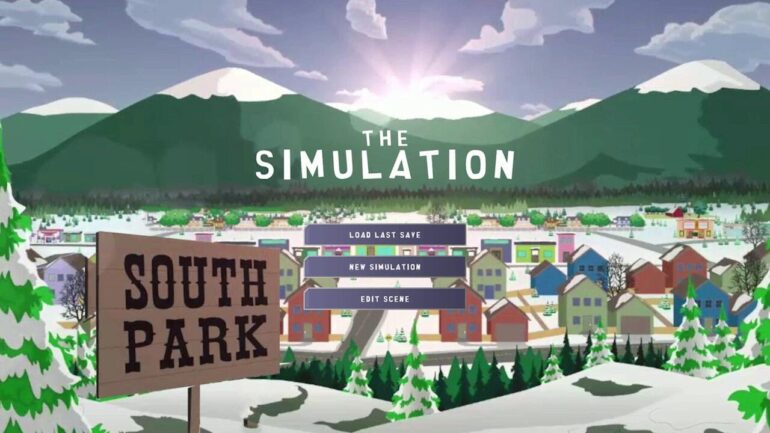TL;DR:
- Fable, a San Francisco-based startup, recently launched the Showrunner AI platform (SHOW-1), a groundbreaking technology crafting TV episodes autonomously.
- This advancement in generative AI arrives amidst Hollywood labor disputes, marking a significant leap in content creation.
- Fable’s Showrunner AI is more than just scriptwriting; it’s a multi-talented virtual producer handling writing, directing, casting, editing, voicing, and animating TV episodes.
- Users can allow AI to autonomously generate episodes or provide a two-sentence prompt for guidance.
- The “South Park AI” project, based on the SHOW-1 model, features AI agents perceiving themselves as show characters, dynamically interacting and generating dialogues.
- The AI employs diffusion models for real-time simulation, adapting backgrounds to unfolding stories without pre-scripting.
- Voice cloning adds realism to AI-generated dialogues with a distinct 2D art style that allows real-time generation.
- Despite concerns, AI technologies like Fable’s Showrunner AI and ChatGPT open new avenues for collaborative storytelling and production.
Main AI News:
Fable, an innovative tech startup based in the heart of San Francisco, recently unveiled its groundbreaking Showrunner AI platform, SHOW-1, a mere month ago. This revolutionary technology stands as a pioneer in autonomously crafting fresh episodes of television series, seamlessly casting you in the lead role. Its debut emerges as a significant leap in generative AI, arriving at a moment of heightened intrigue amidst the ongoing labor disputes within Hollywood’s realm of writers and actors.
Notably, Fable has already secured prestigious accolades with its SHOW-1 platform. With two Emmys and a Peabody award adorning their achievements, the company has now ventured to share insights into the formidable capabilities of its Showrunner AI. These artificial intelligence agents transcend the realm of mere scriptwriting; they emerge as versatile virtual producers endowed with the prowess to script, direct, cast, edit, voice, and even animate entire television episodes.
Edward Saatchi, the visionary CEO of Fable, elucidated, “The AI Showrunner redefines the landscape by crafting South Park episodes for you. The entirety of this creation springs forth from the ingenuity of the AI Showrunner itself.” The technology is so advanced that users can opt to permit the AI Showrunner to independently generate episodes or input a succinct two-sentence prompt to steer the episode’s composition. Disproving skeptics who doubted AI’s capacity for compelling narrative construction, Saatchi asserts confidently:
“It isn’t just about the dialogues. It encompasses animation, vocalizations, and editing. The AI Showrunner stands ready to forge TV episodes. Whether autonomously generated or prompted by the user, TV episodes come to life through the AI Showrunner’s prowess. Those who doubted AI’s narrative prowess should think again; it is absolutely capable.“
But what precisely is this South Park AI? The Showrunner AI, an extension of the groundbreaking SHOW-1 model, emerges as a specialized instrument with the extraordinary capability to fabricate every single facet of a TV episode in real-time. The uniqueness lies in the showrunner agents—distinctive instances of AI that perceive themselves as integral characters within the very show they shape. These agents interact dynamically, conjuring dialogues that build upon the most recent lines uttered by fellow characters.
As elucidated within the research paper published by Fable Studios, the “South Park AI” initiative represents an experimental exploration delving into the domains of artificial intelligence, voice synthesis, and deep learning technologies. Its aim? To faithfully recreate the essence of “South Park” through imagery and voices. It’s imperative to note that this project operates independently, devoid of affiliations with the creators, producers, or copyright holders of “South Park.”
Now, how exactly does the Showrunner AI function? Engineered upon the robust SHOW-1 model, the Showrunner AI emerges as a purpose-built tool, courtesy of Fable Studios, primed to generate every facet of a TV show in real-time. The characters within these productions are brought to life by none other than showrunner agents—individual instances of AI that perceive themselves as genuine characters, conjuring their own dialogues inspired by recent interactions with fellow agents.
The engineering marvel behind this real-time simulation is based on diffusion models—mechanisms that meticulously introduce and eliminate random perturbations from data until the final output crystallizes. This innovative technique facilitates the creation of real-time backgrounds that seamlessly adapt to the evolving narrative—completely devoid of pre-scripted elements.
Furthermore, the technology seamlessly incorporates voice cloning to render human-like speech from AI-generated dialogues. The artistic style, marked by 2D elements, block colors, and subtle lighting, contributes to its real-time generation capabilities. While transitioning to high-quality 3D assets remains a technical possibility, it comes with a higher computational demand, translating to augmented costs.
The path ahead is abundantly clear. AI has ingrained itself in the fabric of our existence, whether consciously acknowledged or not. While debates concerning the organic essence of AI-forged content and the potential transformation of conventional TV are warranted, the spotlight should remain on the brighter dimensions of this technological revolution.
Conclusion:
Fable’s Showrunner AI presents a pivotal advancement in TV production, merging AI-driven creativity with human collaboration. The fusion of AI’s rapid content generation and human imagination opens new horizons in entertainment, heralding a future where AI amplifies, rather than diminishes, human ingenuity. This transformative technology holds the potential to redefine market dynamics, enabling streamlined content creation and ushering in a new era of collaborative creativity.

